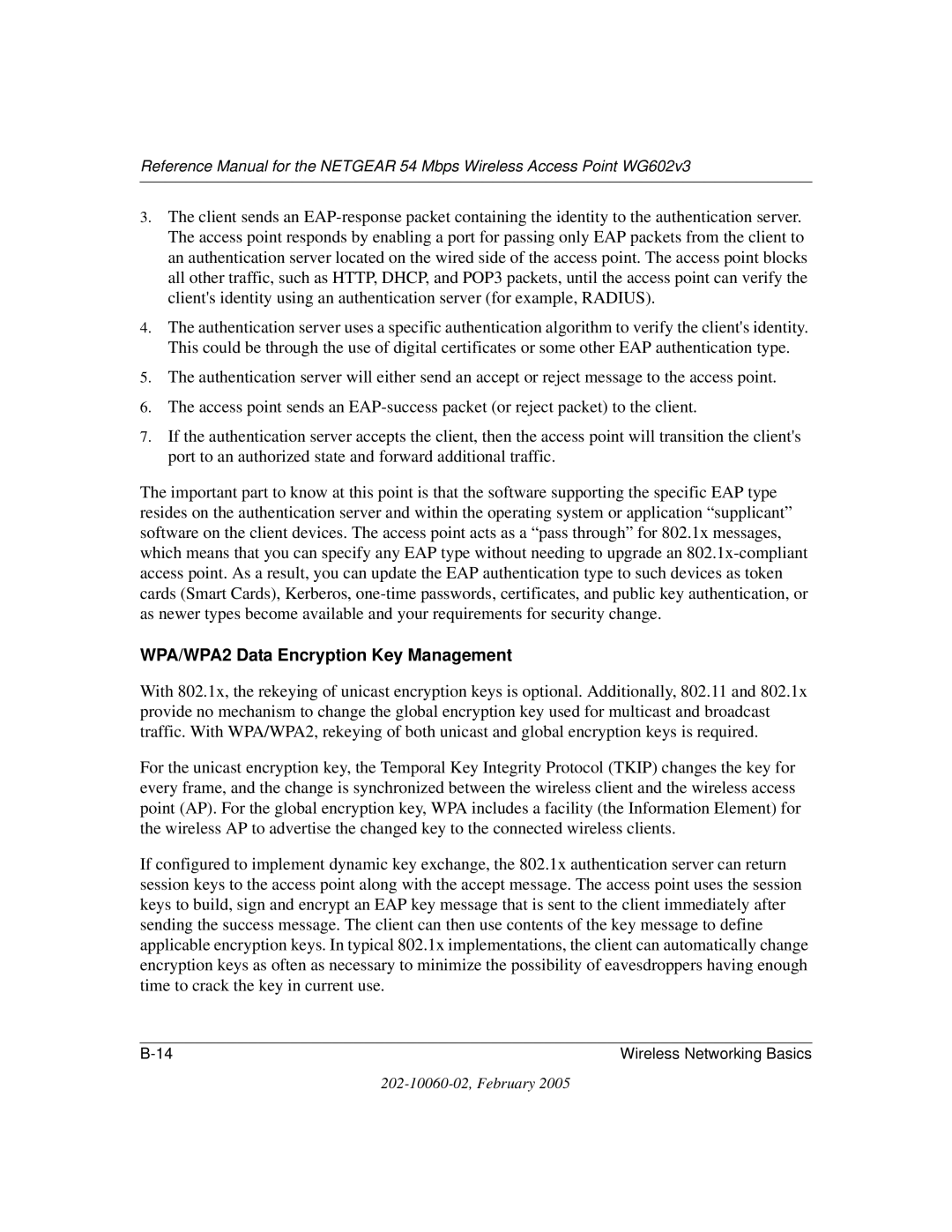WG602v3 specifications
The NETGEAR WG602v3 is a wireless access point designed primarily for home and small office environments. As part of the NETGEAR family of networking devices, the WG602v3 ensures reliable and secure wireless connectivity, making it an essential component for users who require a seamless internet experience.One of the main features of the NETGEAR WG602v3 is its support for the IEEE 802.11g wireless standard, which allows for data transfer rates of up to 54 Mbps. This standard ensures compatibility with older 802.11b devices while providing enhanced performance for newer wireless devices. The WG602v3 operates in the 2.4 GHz frequency band, ensuring widespread coverage and the ability to penetrate walls and barriers, making it suitable for diverse environments.
Another significant characteristic of this access point is its user-friendly setup process. The WG602v3 includes an intuitive web-based user interface that allows users to configure settings with ease. This simplifies the installation process and enables users, even those with limited technical knowledge, to quickly establish a robust wireless network.
Security is paramount in today’s interconnected world, and NETGEAR has incorporated several security features into the WG602v3. The device supports Wi-Fi Protected Access (WPA and WPA2) encryption protocols, ensuring that users can secure their data and prevent unauthorized access. Additionally, the WG602v3 includes a MAC address filtering feature that further enhances network security by allowing only designated devices to connect to the network.
The WG602v3 is also equipped with a detachable antenna, allowing users to customize their wireless coverage based on their specific needs. This adaptability makes it easier to optimize the access point’s performance in different physical layouts. Furthermore, it supports Power over Ethernet (PoE), enabling installation in locations without an accessible power outlet, which is particularly useful in unconventional setups.
In summary, the NETGEAR WG602v3 wireless access point combines ease of use, robust security features, and flexibility in installation to provide reliable connectivity. Its compatibility with both 802.11g and b devices, combined with user-friendly configuration options, ensures that it meets the needs of various users, from casual home users to small office setups, making it a versatile solution for enhancing wireless networks.
